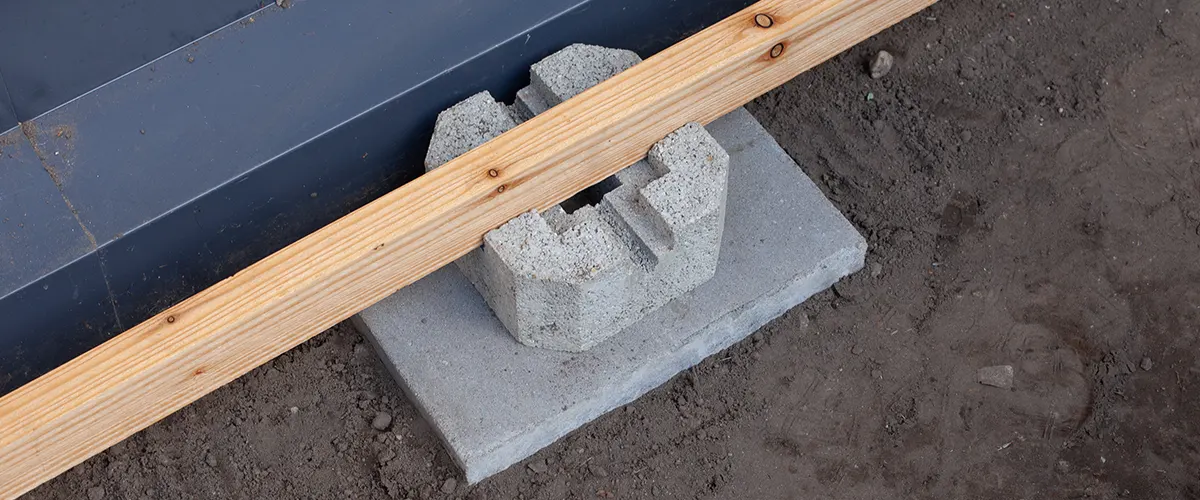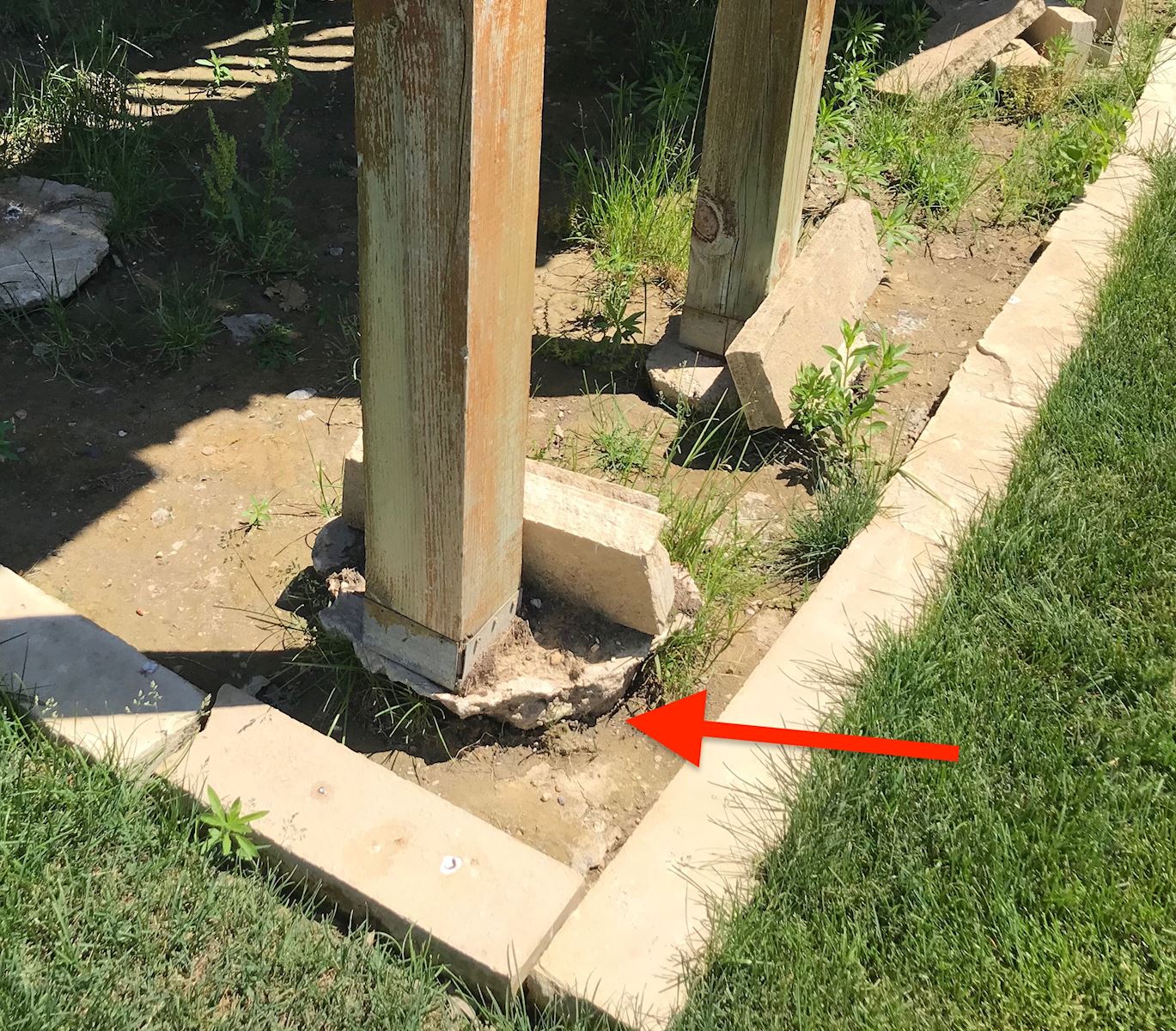Unlocking the Secrets of Resilient Deck Footings: Your Ultimate How-to Guide
Wiki Article
Necessary Tips for Solid Deck Ground: A Comprehensive Guide
Welcome to "Necessary Tips for Solid Deck Ground: A Comprehensive Guide." In this extensive guide, we will certainly give you with the crucial expertise and approaches to make sure a solid and steady structure for your deck. Developing a deck is a financial investment that needs careful preparation and attention to information, specifically when it comes to the ground. This guide will cover crucial facets such as choosing the ideal materials, assessing dirt conditions, calculating tons capability, identifying correct footing depth, and attaining exact installation. By adhering to these ideas, you will be outfitted with the required information to develop a deck that not only boosts your outside room however also stands the examination of time. Let's dive right into the world of strong deck ground and establish a structure you can count on.Picking the Right Deck Ground Materials
When selecting the ideal deck ground materials, it is important to take into consideration the particular demands and demands of your job. The top quality and resilience of the grounds straight influence the security and long life of the deck framework. When selecting deck footing materials., there are a number of elements to consider.One essential factor to consider is the kind of dirt in your location. Different soil types have varying load-bearing capacities and drainage properties. For instance, clay soils tend to retain water, while sandy soils drain pipes promptly. Comprehending your dirt conditions will help you select footings that can effectively sustain the weight of the deck and stop issues such as heaving or sinking.
Extreme temperature levels, wetness degrees, and freeze-thaw cycles can impact the performance of deck grounds. In such instances, utilizing frost-resistant products or setting up footings below the frost line can help minimize these dangers.
In addition, the size and layout of your deck should additionally affect your option of footing materials. Larger or more intricate decks may call for deeper or enhanced footings to make certain sufficient assistance. Comprehending the certain tons requirements of your deck will aid you identify the ideal materials to utilize.
Inevitably, selecting the ideal deck footing materials involves mindful consideration of aspects such as dirt conditions, climate, and deck style. By taking these variables into account, you can choose footings that give the necessary support, improve the security of your deck, and guarantee its longevity.
Appropriately Assessing Dirt Conditions
To correctly examine dirt problems for your deck ground, it is important to extensively assess the load-bearing capacities and water drainage properties of the soil in your area. Comprehending the soil's capability to bear weight and its capability to drain pipes excess water will certainly help make sure the security and long life of your deck.When analyzing the load-bearing capacity of the soil, it is very important to take into consideration factors such as soil thickness, type, and compaction. Different soil types have varying load-bearing capacities, with compacted soils generally offering better assistance than loosened or sandy soils. Conducting a dirt examination can supply useful info regarding the soil's ability to sustain the weight of your deck.
Additionally, evaluating the drainage homes of the soil is important to prevent water accumulation and possible damage to your deck - Deck Footings. Poor drainage can bring about moisture buildup, which can damage the structure and cause architectural issues. It is important to analyze the dirt's ability to drain water effectively to stay clear of these issues
Consulting with a professional designer or soil specialist can substantially help in properly examining dirt conditions for your deck ground. They can supply expert suggestions and assistance, ensuring that you choose the appropriate ground layout and materials based on the details attributes of the soil in your location. Making the effort to completely assess dirt conditions will assist you construct a resilient and solid deck.
Computing Tons Ability for Grounds
One crucial action in making sure the stability of your deck is to properly calculate the load ability for your footings. Deck Footings. The tons capability refers to the optimum amount of weight or tons that the grounds can securely support without triggering any kind of structural damage or failure. Calculating the tons ability for footings entails thinking about numerous factors such as the size and type of grounds, the sort of dirt, the dimensions and weight of the deck, and the live tons and dead lots that the deck will be subjected toTo determine the tons ability, it is necessary to seek advice from neighborhood building regulations and policies as they supply details standards and needs for deck construction. These codes consider elements such as soil bearing capability, frost deepness, and minimal ground measurements. In addition, it is crucial to engage the services of a structural engineer or a professional specialist that can do the needed computations and evaluations to make sure the security and stability of the deck.
When determining the tons capacity, it is vital to precisely identify the live load and dead lots that the deck will certainly experience. The online lots describes the weight of people, furniture, and any kind of various other products that will be put on the deck, while the dead lots describes the weight of the deck itself. By precisely useful content determining these tons and taking into consideration all relevant elements, you can ensure that your grounds are properly designed to sustain the weight and preserve the security of your deck.
Guaranteeing Appropriate Ground Deepness
Proper ground depth is crucial for making certain the stability and longevity of your deck. The deepness at which the grounds are set up directly impacts the structural honesty of the deck, as it identifies just how well the footings can stand up to the forces applied by the deck and the soil beneath it.When establishing the suitable ground news depth, numerous elements have to be thought about. These consist of the sort of dirt, the regional environment, and the load ability required for the deck. Normally, grounds ought to be positioned below the frost line to avoid any heaving or changing due to freezing and thawing cycles. In areas with expansive clay soil, much deeper grounds might be necessary to provide adequate assistance.
To determine the proper footing deepness, it is advised to talk to a structural engineer or building examiner that can evaluate the certain problems of your website and provide assistance based on regional building regulations and laws. They will certainly consider aspects such as dirt make-up, aquifer degree, and expected loads to determine the minimum required footing depth.
Setting Up Grounds With Precision
Installing grounds with accuracy is crucial for making certain the security and structural integrity of your deck. Properly mounted grounds offer a solid structure, making certain that your deck can stand up to the weight of furniture, people, and various other tons. To install grounds with accuracy, there are a number of essential steps to adhere to.First of all, it is essential to accurately note the place of each footing. This can be done by utilizing a string or chalk line to produce a clear rundown. By measuring and noting the precise positions, you can make certain that the footings are equally spaced and lined up.
Next, you require to dig the holes for the grounds. It is important to dig them to the proper depth and size, as specified by neighborhood structure codes and regulations. This will certainly provide ample support and protect against the deck from changing or sinking gradually.
Once the openings are dug, it is important to degree and compact the soil at the base of each hole. This will certainly create a steady base for the ground to remain on and prevent any type of settling or activity.
After preparing the holes, you can continue with putting the concrete. Utilize a concrete mix that is ideal for footings and comply with the supplier's guidelines for pouring and blending. Make certain that the concrete loads the holes completely and is degree with the ground surface.
Lastly, allow the concrete to treat properly before waging the construction of your deck. This will make sure that the grounds are strong and stable, supplying a safe and secure foundation for your deck.

Verdict
To conclude, making certain strong deck ground is important for the stability and long life of a deck framework. By picking the ideal ground materials, assessing soil conditions, computing lots capability, and setting up footings with accuracy, the danger of structural failure can be decreased. Complying with these important suggestions will certainly assist produce a strong structure for any type of deck job.Understanding your dirt conditions will aid you select grounds that can successfully sustain the weight of the deck and avoid issues such as heaving or sinking.
Consulting with an expert engineer or dirt expert can greatly aid in correctly assessing dirt conditions for your deck ground. Computing the load ability for grounds involves taking into consideration different variables such as the pop over to this site size and kind of footings, the kind of soil, the measurements and weight of the deck, and the real-time tons and dead lots that the deck will be subjected to.

Report this wiki page